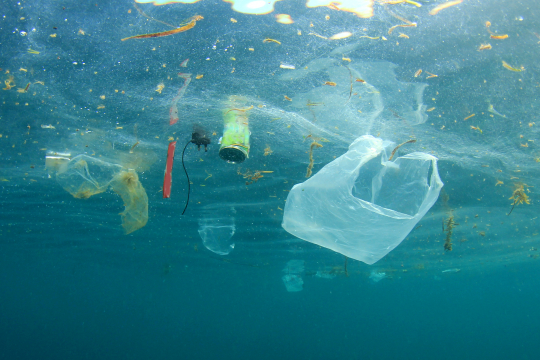Marine litter has different impacts on fisheries by damaging gear, reducing catch, and necessitating time to repair or clean nets, making it a significant problem for this industry. This article explores the sources, types, and distribution of marine litter and how production risk and technical efficiency in the trawl fisheries in Vietnam are affected by the presence of litter. The empirical analysis is conducted using data collected from a sample of 208 trawl fishers in Phu Yen, Khanh Hoa, and Ninh Thuan provinces. Our analysis indicates that primary sources of marine litter as reported by fishers are tourism and land-based emissions, with plastic being the dominant type. Litter accounts for 20% of the catch, making it a risk-increasing factor for trawl fisheries and causing technical inefficiency. Our findings emphasize the importance of developing policies for Vietnamese fisheries to jointly address production risks, improve technical efficiency, and decrease marine litter pollution.
The Impact of Marine Litter on Production Risk and Technical Efficiency in the Trawl Fisheries of Vietnam
EfD Authors
Country
Sustainable Development Goals
Publication reference
Ngoc, Q. T. K., Xuan, B. B., Börger, T., & Duy, N. N. (2022). The Impact of Marine Litter on Production Risk and Technical Efficiency in the Trawl Fisheries of Vietnam. Marine Resource Economics, 000–000. https://doi.org/10.1086/722489


